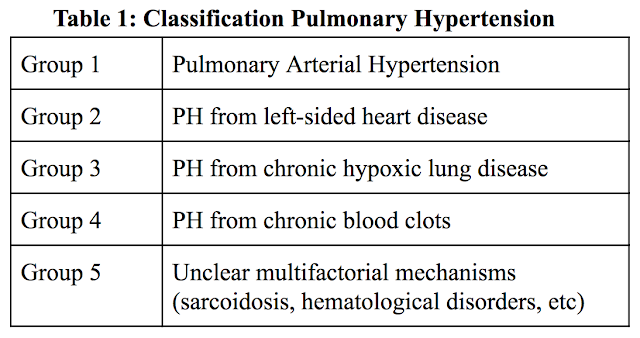Aspiration pneumonia (infection occurring from the exposure) results from the swallowing of colonized oropharyngeal contents into the lower respiratory tract with subsequent inflammation and infection.
Aspiration pneumonitis (Mendelson's syndrome) is from exposure of sterile gastric contents into the lower respiratory tract. This results in a rapid chemical pneumonitis due to irritation of the pulmonary tissues from the acidic material.
Risk Factors for Aspiration
Pathophysiology
Typical bacterial species involved in aspiration pneumonia
Antibiotic therapy for aspiration pneumonia should include coverage for anaerobic organisms.
Presentation
Further reading
Posted by:
Aspiration pneumonitis (Mendelson's syndrome) is from exposure of sterile gastric contents into the lower respiratory tract. This results in a rapid chemical pneumonitis due to irritation of the pulmonary tissues from the acidic material.
Approximately half of the healthy adults aspirate small amounts oropharyngeal secretions during sleep. Sterile pneumonitis and aspiration pneumonia are difficult to distinguish from one another, even with bronchial lavage.
Risk Factors for Aspiration
- Reduced Consciousness (EtOH, Drugs, Procedural Sedation, GA)
- Neurologic (Stroke, Seizure, TBI, Dementia, Chronic Neurologic Conditions)
- Oropharyngeal (Poor oral hygiene, Intubation)
- GI (GERD, Esophageal dysmotility, Oral/NG Tube feeding)
About one third of those who aspirate have “silent aspiration” without evidence of cough or gagging.
Pathophysiology
- Inflammation (peaks in 4 to 6 hours) --> Increase capillary permeability
- These reactions may manifest clinically as a cough, pleuritic chest pain, fever, and radiographic findings.
Typical bacterial species involved in aspiration pneumonia
- S. pneumoniae
- S. aureus
- H. influenzae
- Enterobacteriaceae in community-acquired aspiration pneumonia.
Hospital Acquired Aspiration - P. aeruginosa and gram-negative organisms
Antibiotic therapy for aspiration pneumonia should include coverage for anaerobic organisms.
Presentation
The clinical symptoms of aspiration pneumonia include fever, dyspnea, and productive cough. Patients may show up tachycardia, tachypnea, rales. Other symptoms of systemic infection in the elderly and debilitated may be present, including a change in mental status, lethargy, and nausea or vomiting.
Witnessed aspiration is a key feature in the diagnosis of aspiration pneumonitis or pneumonia. Typically those with noninfectious aspiration are younger, and the aspiration is witnessed. These patients will present giving a history of aspiration and coughing immediately afterward.
“Silent aspirators” are typically older and have a chronic neurologic disorder and will present with a cough or fever or general malaise. Historical features that suggest silent aspiration include general debility, recurrent cough, hoarseness, or dysphagia.
Diagnosis
Recumbent Aspiration typically involves posterior portions of the upper lobes and the upper portions of the lower lobes
Upright Aspiration typically involves the most dependent portions i.e. basal segments of the lower lobes.
Witnessed aspiration is a key feature in the diagnosis of aspiration pneumonitis or pneumonia. Typically those with noninfectious aspiration are younger, and the aspiration is witnessed. These patients will present giving a history of aspiration and coughing immediately afterward.
“Silent aspirators” are typically older and have a chronic neurologic disorder and will present with a cough or fever or general malaise. Historical features that suggest silent aspiration include general debility, recurrent cough, hoarseness, or dysphagia.
Diagnosis
- CXR usually shows unilateral focal or patchy consolidations in the dependent lung segments (Right lower lobe is the most common in upright aspiration)
- CT Scan
Initial CXR if done too early in the course may not show any changes
http://www.svuhradiology.ie/case-study/aspiration-pneumonia/
Recumbent Aspiration typically involves posterior portions of the upper lobes and the upper portions of the lower lobes
Upright Aspiration typically involves the most dependent portions i.e. basal segments of the lower lobes.
Treatment
Large volumes aspiration may require suctioning of the tracheobronchial tree or bronchoalveolar lavage to clear the airway. Bronchodilators aid aspiration-induced bronchospasm.
Large volumes aspiration may require suctioning of the tracheobronchial tree or bronchoalveolar lavage to clear the airway. Bronchodilators aid aspiration-induced bronchospasm.
- Community-Acquired Aspiration (S. aureus, S. pneumoniae, and H. influenzae) - Use Co-Amoxiclav or Levofloxacin
- Suspected MRSA - Add Vancomycin or Linezolid
- Patients with severe periodontal disease, putrid sputum, or lung abscess - Give piperacillin-tazobactam.
Clinically well-appearing patients with normal gas exchange are candidates for possible discharge with instructions to return if they experience worsening symptoms. Those with significant comorbidities need to get admitted for observation and Antibiotics.
Further reading
- Kikuchi R, Watabe N, Komino T, et al: High incidence of silent aspiration in elderly patients with community acquired pneumonia. Am J Respir Crit Care Med 150: 251, 1994.
- Marik PE: Aspiration pneumonitis and aspiration pneumonia. N Engl J Med 344: 665, 2001.
Posted by:
Lakshay Chanana
ST4 Trainee
Royal Infirmary of Edinburgh
Department of Emergency Medicine
Department of Emergency Medicine
Edinburgh
Scotland
Scotland






